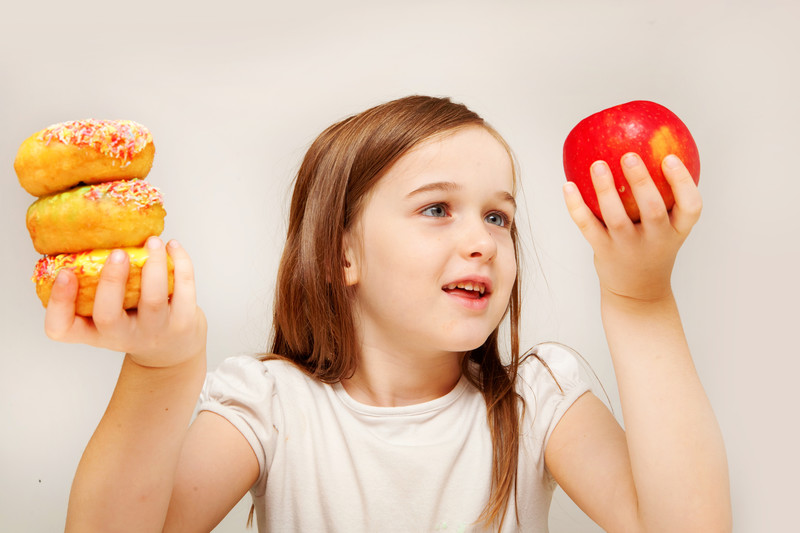KIDS: Your goal here is to learn how to take good care of yourself by seeing food as fuel for the body. By setting up a few things in the right way, you can learn how to make choices that help rather than hurt you in the long term.
As an adult, I’ve noticed that when I go to the doctor for my physical exam, the questions they ask indicate what kind of problems they usually see in adults. The questions look something like this:
- What is your weight?
- Do you smoke?
- Do you drink alcohol?
- Do you drink coffee and how often?
- What medications are you currently on?
The first one is an indicator about what you eat, but it’s not a great measurement tool, since you can be within a normal weight range, but still unhealthy on the inside. Adults will have blood tests done that can show how things are operating on the inside, but even that doesn’t catch all the signs of problems.
When I asked doctors what adults usually die from, they all reported back the same thing: heart disease and stroke were the main issues. And the chances of getting these is greatly reduced by two important factors: exercise and eating well.
It’s kind of like getting your teeth cleaned. No one really enjoys the process, but what do you think would happen if a kid refused to brush her teeth for ten years? Right – she wouldn’t have any teeth left by adulthood. The problem is, it’s so far away that she doesn’t really see a problem because it won’t happen for years. Same thing with your health choices.
So how do you handle it?
First, you get a goal clearly in mind. What kind of adult do you want to be? You probably have a lot of great examples around you, from positive to neutral to “not quite so good”. How do you see yourself when you’re in your 20s and 30s? Seems like it’s so far away, right?
Imagine every day you put a dollar eat healthy and exercise, you put a dollar in your piggy bank. After a week, you’d have… $7. Doesn’t sound like much, right?
What happens after 20 years? Now you have $7,300. Imagine what you can do with over seven thousand dollars! You can buy a car, take a trip… anything!
Your health is like that. It takes a while to build you, but after awhile, what you’ve got is truly amazing.
So how do you do that? How do you build an amazing future for yourself?
Easy! Ask yourself one question before you ever put something in your mouth:
“Is this moving me toward or away from my goal of being healthy?”

If it’s a “zag” day (only once per week, by the way!), then go for that treat. If not, stick with the healthier option and put that dollar in your piggy bank.
Oh, and I forgot to mention – you’d actually earn more than $7,300… it’s actually $12,655, because the amount you put in daily compounds, pushing you further even more. Imagine this: how much energy does an overweight person have when they exercise? Not nearly as much as someone who is already in shape. Who will exercise for longer? The fit person. That’s the “compounding” at work. With your body, you don’t just get the benefits of $1 per day… it stacks and builds on itself, giving you even more energy!
So what do you do now?
First, write that question out on several sheets of paper in BIG, large letters, and tape it everywhere you’re going to see it when you reach for food, like on the refrigerator, the pantry, the secret stash of candy bars… everywhere.
“Is this bite moving me toward or away from my goal?”
Next, get involved in planning your own meals. There are only a few areas in your life where you should be absolutely in charge, because no one else is going to care nearly as much as you do about it. (The other two areas are parenting and money management.)
Kids need 900 calories per day for a 1-year-old to 1,800 for a 14–18-year-old girl and 2,200 for a 14–18-year-old boy. Keep the total fat intake between 25-30% of calories. You can really get lost in the numbers, so here’s a couple of guidelines that I use with my own kids:
- Eat whole-grain and high-fiber breads, pasta and cereals. Look for “whole grain” as the first ingredient on the food label and make at least half your grain servings whole grain. For me, I love having oatmeal in the morning.
- Pick 2-3 fruits per day and 4-6 vegetables. You can eat these raw or cooked. I eat my fruit and vegetables packed in a smoothie so I get it done and out of the way early in the day. I’ll also put things I don’t like eating (but know I need to eat these to maintain a healthy diet), like flax, kale, spinach, etc. so when it’s all mixed up with fruit, it’s much easier to do.
- Eat a vegetable rainbow (aim for 4 different colors if you can) every day, and have one of those colors with every meal, and this can be raw or cooked.
- Most kids love cheese and carbs, and usually eat way more than they need. If this is you, cut the cheese into small portions and put into bags or small containers so you don’t eat too much at once. You don’t need to eat the whole box of crackers to enjoy the taste!
- If you have a hard time fulfilling protein, try easy to grab options, like hard boiled eggs, sliced turkey, or a small handful of almonds. Aim for two proteins per day, and make sure twice a week you’re eating fish (not fried) like salmon.
- Trim the sugar, meaning drink soda water instead of soda and if a cereal has more than 5 grams of sugar, it’s a “Saturday Cereal”. Track your sugar and aim for less than 35 grams of added sugar per day (don’t worry about the natural sugars in fruits and vegetables).
- Track your sodium and be sure it’s less than 2,000 mg per day. If it doesn’t have a label, don’t worry about it (like fruits and vegetables).
Make a chart for yourself using the guidelines above with pictures of the foods that you enjoy that fit hose guidelines, and tape it to the fridge and on the pantry door, so when you’re hungry and can’t remember what to eat, you’ve got it right there to help train your brain to pick the choices you want to.
Kids that are involved in making their own meals and handling their own nutrition are set up for a lifetime of success!

PARENTS: Teaching kids how to eat healthy without even thinking about it is a worthy goal, but how do we do that when kids are surrounded by advertisements, media, and friends that choose otherwise?
Make it fun, easy, and rewarding. Just like we do when we’re dog training.
But unlike “dog training”, you also have to answer the “why” question, and make sure that kids are on genuinely on-board with the goals you’ve set out for them. It has to be a team effort, with the parent as the teacher. It isn’t going to work if food is the source of control in the parent-kid relationship.
Kids love information, especially if it’s interesting and pertinent to them.
You can help your kids most by not making a big deal out of food choices. Don’t try to get it all right the first time. We’re going for effort, not accuracy, especially when they get started on a new track. (Remember the first time they made the bed? You praised them for trying, even though it may have looked worse than when they first rolled out of bed.)
Instead, provide your kids with the information in this article, go through it with them and add in your own personal choices and perspective. There’s no one-size-fit-all, so please use this information as a starting point because unfortunately, most educational programs for kids neglect to teach kids in a hands-on way how to take good care of themselves nutrition-wise.
